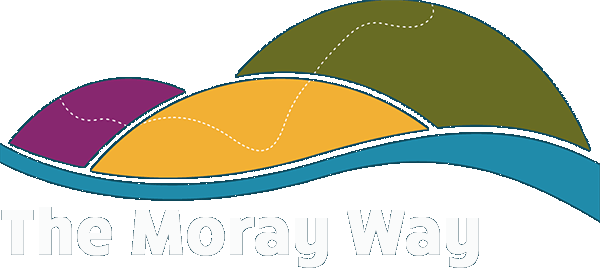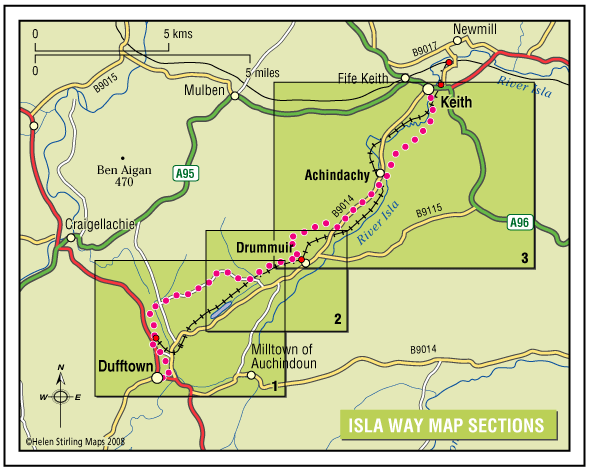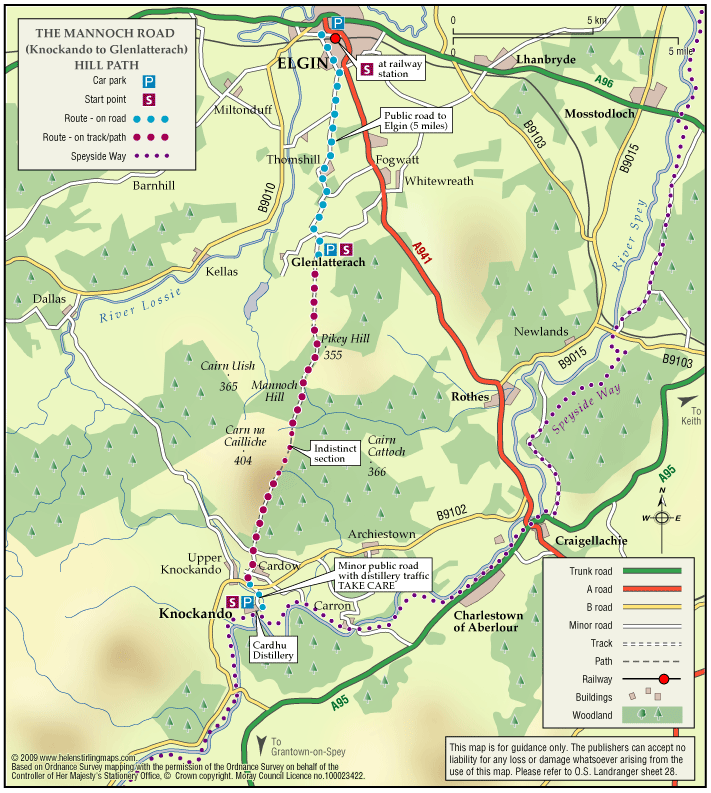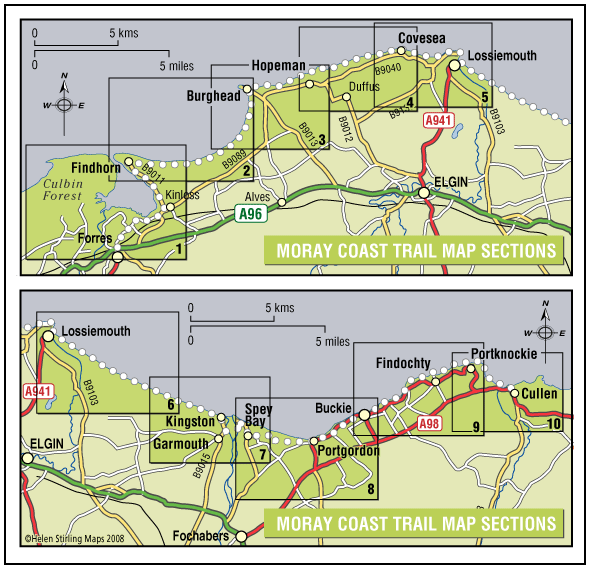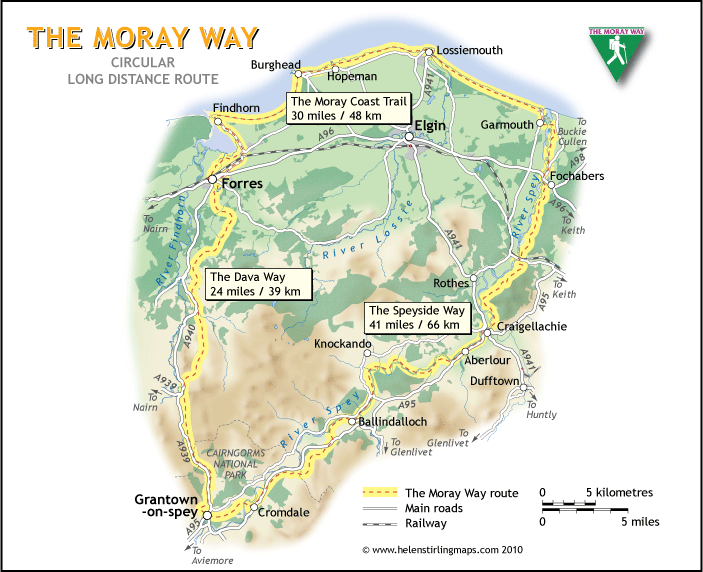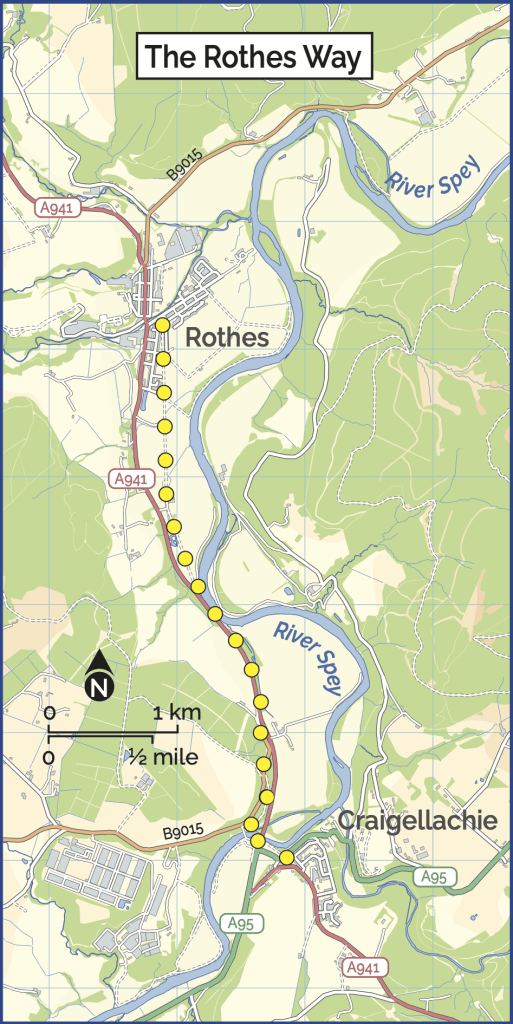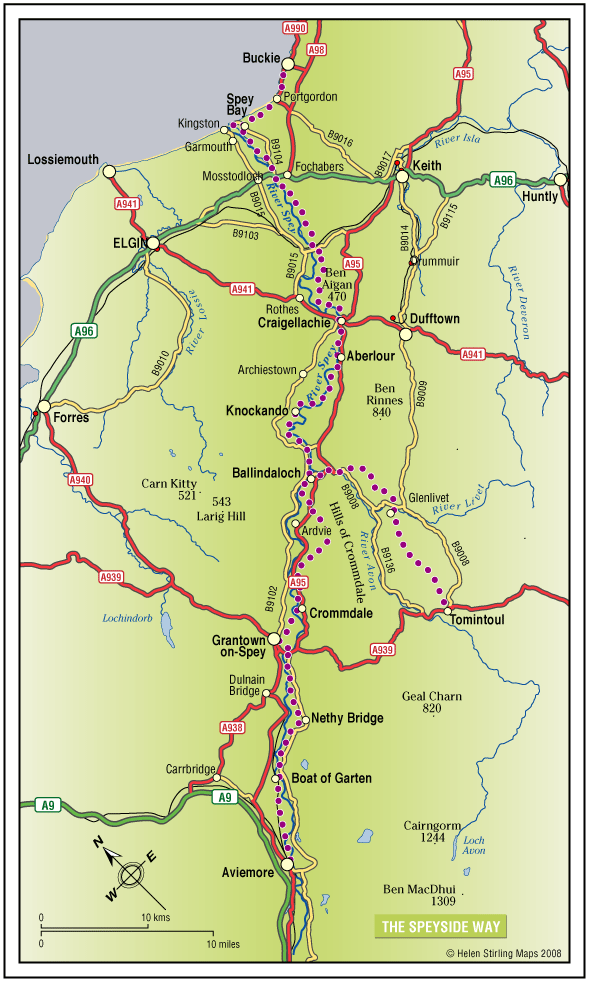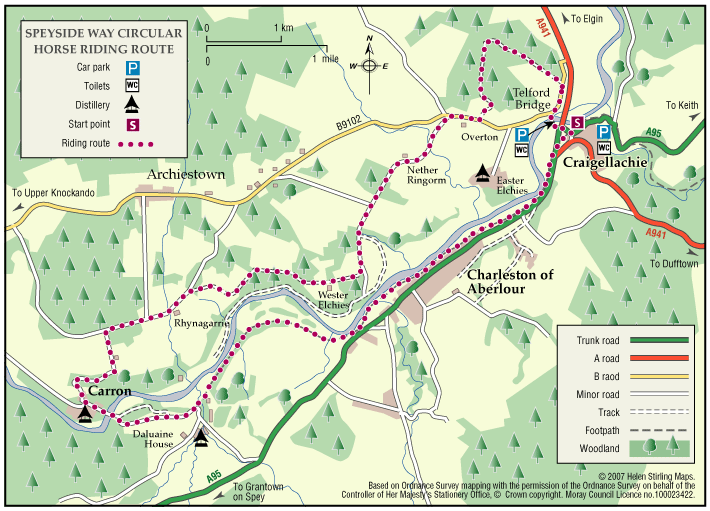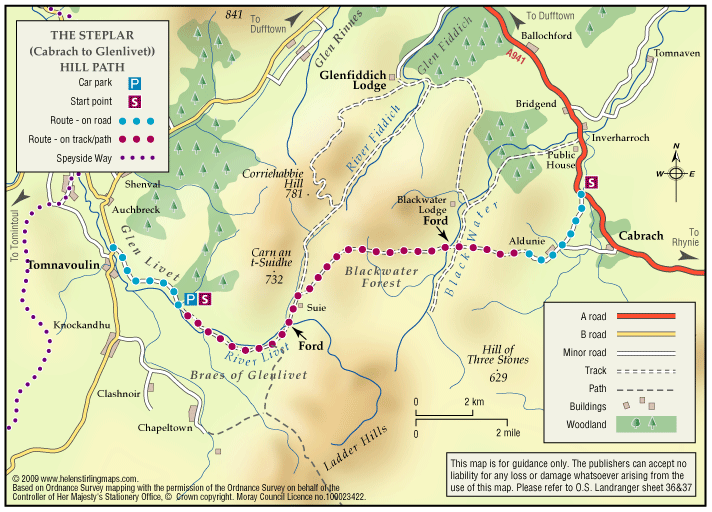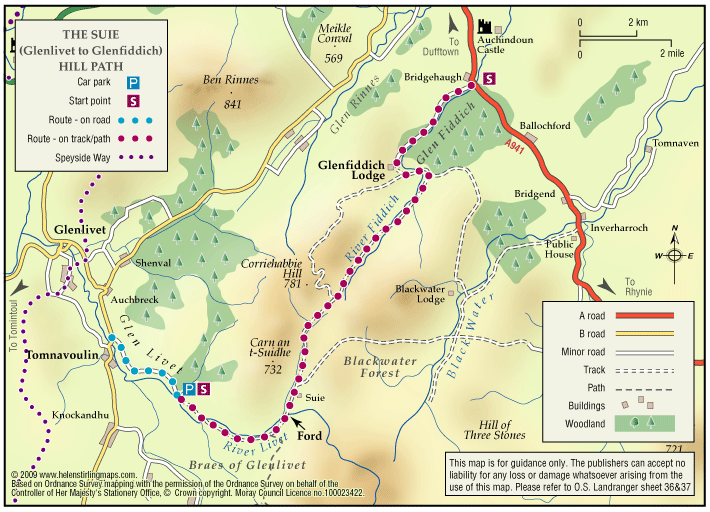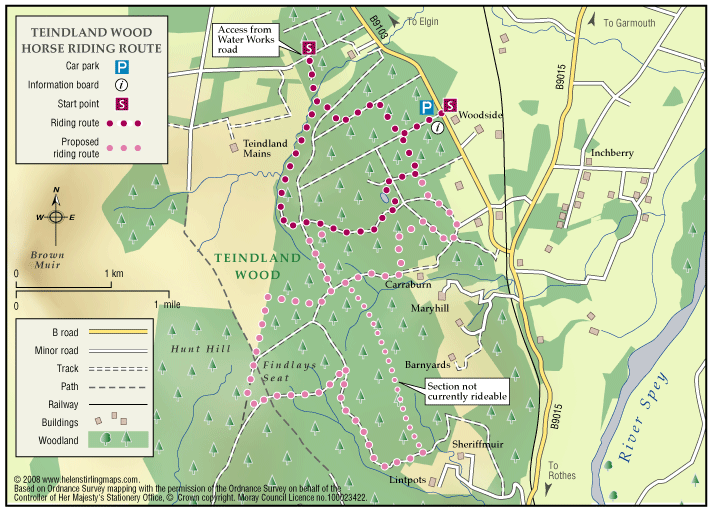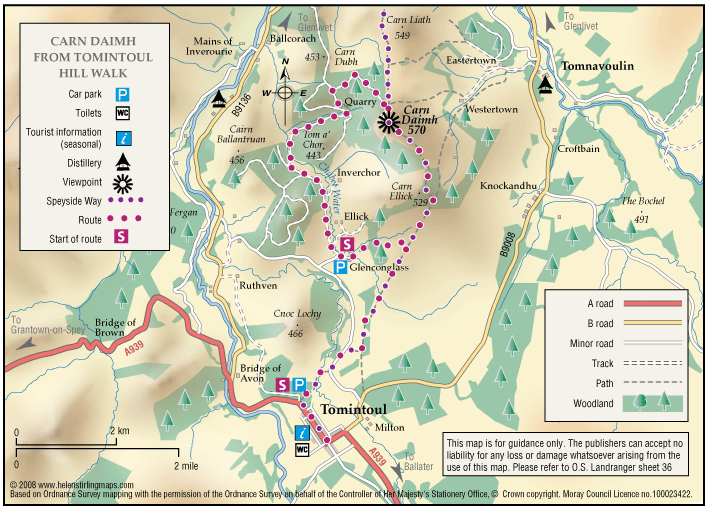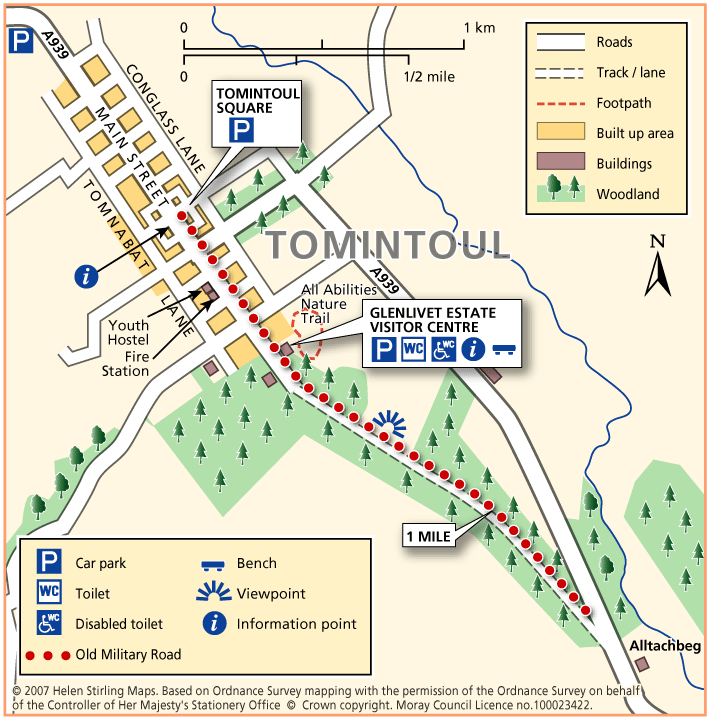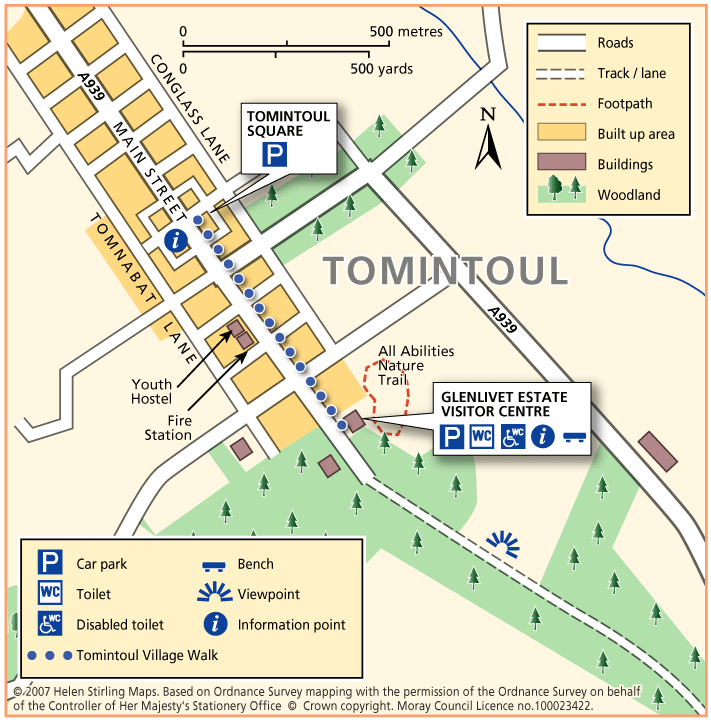The Isla Way
This 13 mile route has a great variety in scenery and setting, and you will always be rewarded with natural beauty wherever you are on the path. The route follows the valley of the infant River Isla, which rises in the hills above Drummuir on its way to Keith and the Moray Coast beyond.
- Long Distance Walk
- Challenging
- 13 miles (20.8 km)
- 240 meters (787 ft)
- 1 day(s)
- Auchindachy, Drummuir, Dufftown, Keith, Mill of Towie, Towiemore
Accessibility: Unsuitable for wheelchairs and buggies
All of the route can be used for walking, cycling, and horseriding.
Terrain: Varied surfaces
Surfaces are generally sound including tar, gravel and earth paths. In places the trail follows narrow tarmac public roads, and road pavements through Dufftown and Keith. Sections of the paths will be muddy when wet.
Gradient: Undulating
The route climbs to around 300 metres (1,000ft) above sea level. Total height climbed is modest at around 240 metres (780 ft). Slopes are generally easy, although there are a couple of steep sections to be negotiated.
- Partly signed
